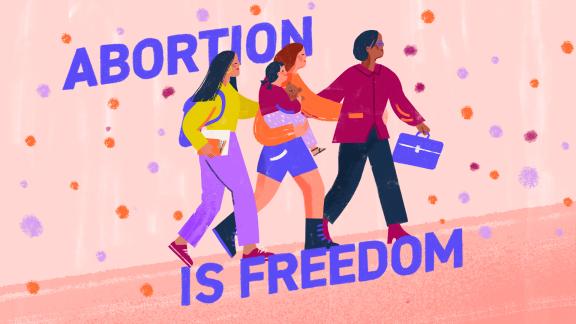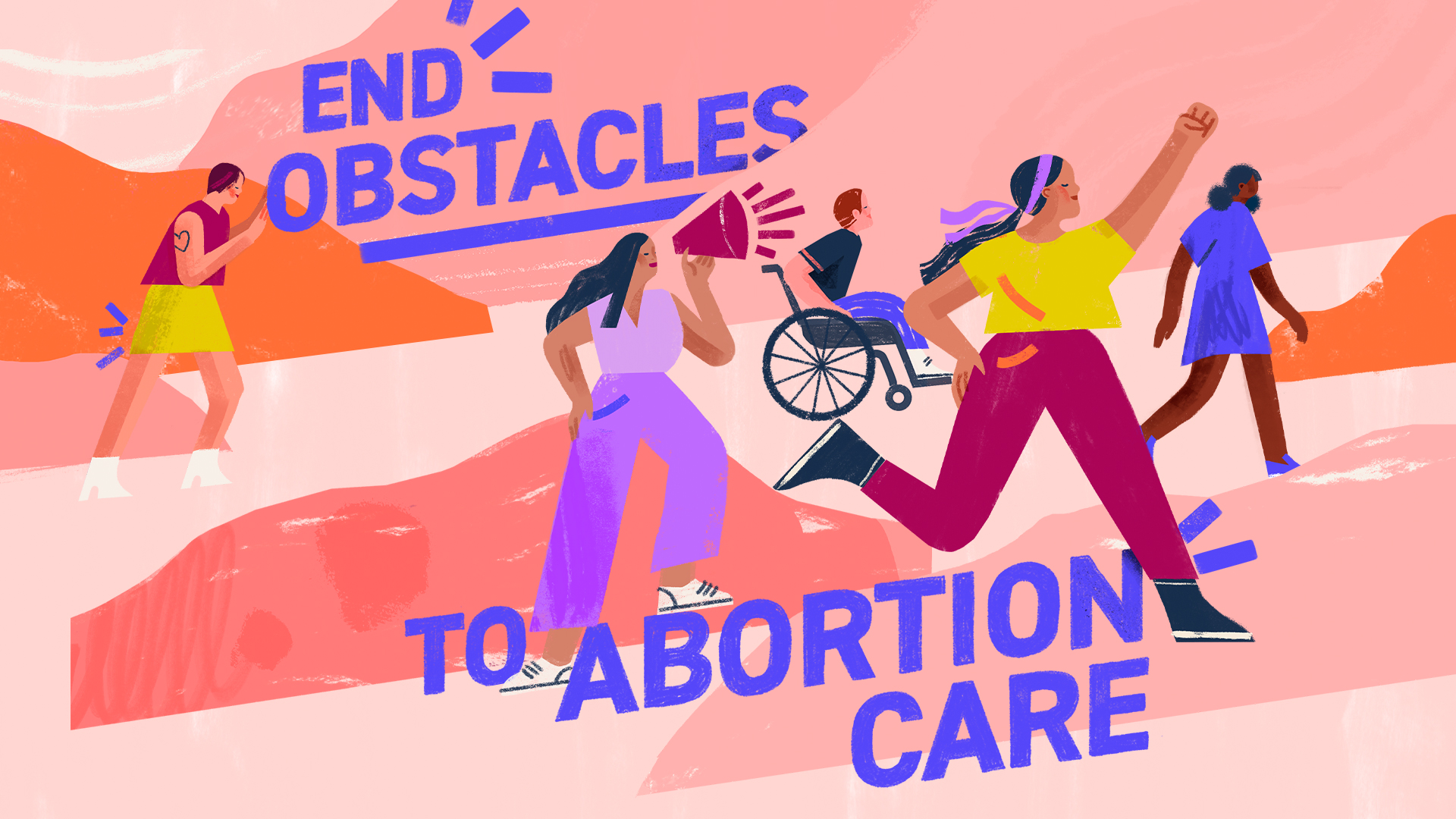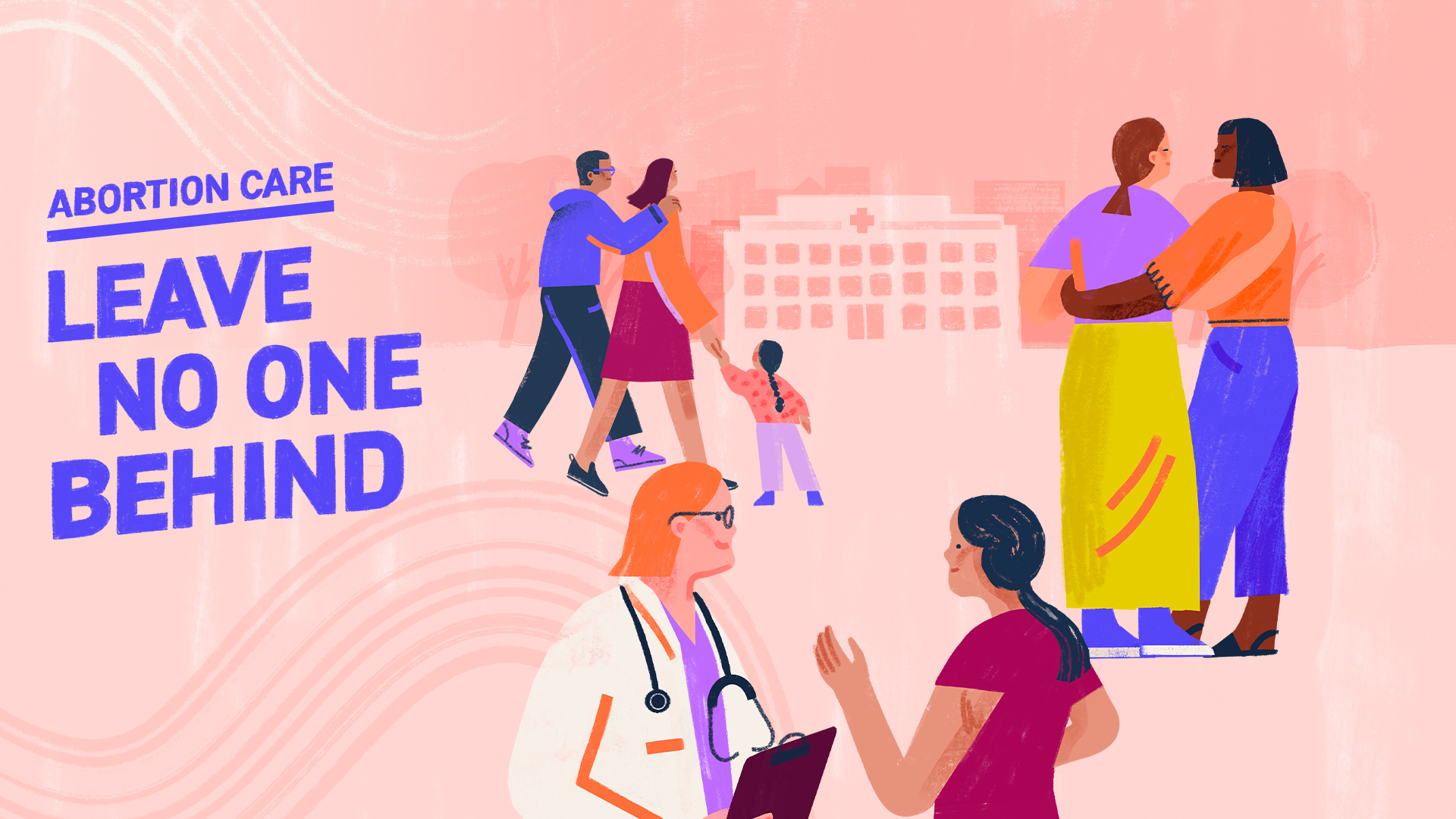Hitting the road in the desperate search for abortion care
For thousands of women and girls in Croatia, getting an abortion involves travelling for hours, even days, across this small but poorly connected country in search of appointments. Whether by ferry, bus, or both, these journeys mark the beginning of an arduous and expensive ordeal – one that piles stress and costs onto people needing an abortion and forces many to leave Croatia altogether.
On paper, a very different picture emerges. “By the law, abortion is quite accessible in Croatia,” says Marija Trcol of human rights and civic participation organisation PaRiter. Abortion on request is legal for up to ten weeks, and all public hospitals with obstetrics and gynaecology departments should provide care. But dig a little deeper and the extent of the crisis quickly reveals itself. “Actually there is no hospital with accessible abortion in Croatia,” Marija says. “There’s a really big discrepancy between [law and reality], which is why Croatia is perceived as a state with accessible abortion.”
Different factors push people to travel far from home for care – from shortages in medical staff and problems rife within Croatian healthcare overall, to stigma and discrimination attached to abortion in this deeply Catholic country, where the growing influence of the church and chauvinist campaigners is intensifying structural violence against women. Scrutiny of these factors – among others – reveals catastrophic issues within Croatian healthcare and social attitudes to women, and why the struggle for abortion care is increasingly expensive and traumatic.
Abortion’s hefty price tag
For many people, the first barrier is Croatia’s complex geography: there is no abortion care in the islands or rural communities, and people must travel to mainland cities for appointments. In a nation of islands, mountains, and creakingly slow bus networks, this can be time-consuming and expensive. “It’s a small country but it’s really complicated to [reach] certain hospitals,” says Marija. “Public transport in Croatia is the worst – cities are not well-connected with buses, and it takes half of a day to a whole day just to travel to the hospital.” Ferries are expensive, costing €30-100 one-way.
There are also no sick days for abortion care on request: people must book a day off, which can be complicated to arrange and lose you a day or more’s pay.
Then there is the price of the abortion itself. Abortions on request are around €300 in public hospitals and up to €800 in private clinics. People with rhesus negative blood must pay an extra €50-80 euros for anti-D injections. Almost everyone has to fund their own care: the state only pays in specific cases of medical indication or rape, and the process for rape cases is deeply flawed, exacerbating trauma.
These costs are “a massive chunk of your salary, especially if you are not economically stable, like women in some violent relationships,” says Marija. “For people with low socioeconomic status, I would say it’s impossible.”
“The median salary in Croatia is around €900,” and women often work in low paid sectors or roles, she says. The country has a 12% gender pay gap, and 21% of women are at risk of poverty – shooting up to 48% for single women and 32% for single parents.
Many groups face additional cultural or logistical barriers to care. The Roma community has long experienced stigma and discrimination when attempting to access state services, including abortion care, Marija says. People with disabilities are also more vulnerable. “For people who need assistance to go to a doctor, this is something that the state does not provide at all,” she explains. “If you are deaf, for example, I don’t see how you can have an abortion without huge expenses.”
These restrictions underline how transformative abortion telemedicine would be in Croatia, where it is currently banned. Croatian abortion law was drawn up in 1978 when abortions were exclusively surgical, meaning lawmakers decreed that procedures must take place in hospital. Fast forward five decades, and millions of people globally now use abortion pills at home in line with WHO guidelines, making abortion cheaper and more accessible, and reducing stigma.
Spiralling denial of care
One of the most significant barriers is the dramatic fall in the number of doctors and hospitals providing abortion care. ‘Conscientious objection’ – the practice of refusing to provide care on grounds of personal beliefs – lies at the crux of this crisis, as in many European countries. Since being legalised in 2003, it is now “normalised”, Marija says. The law doesn’t just apply to gynaecologists: any member of an abortion care team can invoke it, and a procedure will be cancelled if most of the team object, Marija explains. Even if no one objects, senior management can stop procedures going ahead, and hospital managers have sometimes fired staff for providing abortions, Marija says.
This has had a catastrophic impact. By 2018, 59% of health workers were refusing to provide abortions. According to recent research by the gynaecologist Jasenka Grujić, there are now two hospitals in Croatia where all staff refuse to provide abortion care, 12 hospitals where 50-100% of staff refuse, and 9 hospitals where 1-49% of staff refuse.
Another problem is that “there is no regulation of denial of care in hospitals at a state level at all,” Marija says. For example, hospitals should ensure there is always at least one team available to provide abortions, but currently there is no government pressure on them to do this, she explains. Many abortion facilities are only open a few hours a day, a few days a week, and certain gynaecologists have become so notorious for being “really harsh to women” that people avoid them altogether.
Forced to travel abroad for care
A notorious case from 2022 reveals how doctors use denial of care and evasion to suppress reproductive justice. Mirela Čavadja was in the 24th week of pregnancy when doctors told her the fetus was unlikely to survive. Every hospital she contacted in Zagreb refused to provide abortion care – some citing ‘conscientious objection’, others saying “they were not equipped with knowledge and equipment to perform this kind of abortion, although by law this needs to be accessible in Croatia,” Marija explains.
Finally, Mirela had to go to Slovenia for an abortion – a familiar path for women with medical indication in later pregnancy. Marija says doctors frequently tell such women to travel to Slovenia and foot the €5,000 bill themselves, despite the state being legally obligated to reimburse costs if Croatia lacks capacity to deliver care when it is medically indicated. This is yet another example of doctors participating in reproductive violence against women.
Women at different stages of pregnancy also travel to Bosnia and Herzegovina or as far afield as the Netherlands to access abortion care – a shocking indictment of the state of abortion care coverage in Croatia
Dearth of data
The lack of data on abortion coverage exacerbates the struggle for appointments. Hospitals are supposed to send annual data reports to the Institute of Public Health, but there are no sanctions if they don’t and no way to find out if reporting is accurate, Marija says. Many hospitals say they provide abortion care, “and then the woman comes and they won’t do it,” she explains.
For women's rights activists, unreliable data seriously hampers their work. For women and girls, it means they can spend hours ringing around trying to get appointments, or turn up for an appointment and be turned away. “So this is something that we are going to campaign for – give us the true data and please give us the list of teams who are doing the abortions.”
Data leaks linked to abortion stigma
The leaking of confidential patient data by medical staff to “shame” women who have had abortions is another serious problem – and yet another reason why women seek care far from home, Marija says. “If you live in a smaller place, then you sometimes choose to travel to a big city, because even if care is accessible, there’s a big chance of data being leaked and the whole place will know that you had an abortion,” she explains.
Such leaks are illegal but completely normalised, and “there are no sanctions.” Even government ministers are involved: in the uproar following Mirela Čavadja’s case, the minister of health – himself a doctor – “went public with all of [Mirela’s] medical data” to the media. He remains in post.
Misogynistic networks target abortion
Growing links between anti-abortion actors, politicians, the church, the far right, and healthcare providers are a major threat to abortion care in Croatia. Since the breakup of Yugoslavia in the early 1990s, the power of the Catholic church has surged. “The church has a really big influence on politics and on the health system regarding reproductive health,” Marija says. With the entry of the far-right Homeland Movement into coalition government in April, Croatia’s government has shifted further right, and many in government have strong ties with the church and the growing anti-gender movement, Marija adds.
She explains that different groups – including the ultraconservative Poland-linked ‘kneelers’, and ‘40 Days for Life’ abortion clinic picketers – target people providing or accessing abortion care, and are often backed by the church or global networks. The ‘kneelers’ are so entrenched that “they’re now part of the government,” Marija says. Women’s rights activists have been mobilising in response, including by calling for criminalisation of harassment of women seeking abortion care, but the threat remains dire, calling for massive, united efforts by campaigners.
Mobilising to protect women
This brings us back to the perception gap. Public support for abortion care is high at 65-75%, but this is a “quiet majority”, which hasn’t yet recognised the threats facing abortion access, Marija says. To galvanise people to speak up, campaigners need to expose gaps between perceptions and reality – and this calls for more trustworthy data. With this in mind, PaRiter is running a survey on abortion access and hopes that “through the next two years we’ll have established some kind of independent monitoring system on abortion,” with the support of other feminist organisations, within their capacities and means.
PaRiter is also scrutinising contradictions between Croatia’s stance on women’s rights and its European and international commitments, and plans to report yearly on findings. Despite the government’s shift rightwards, Marija says “our hope is that they are still going to want to look good in the EU’s eyes” and so constrain attacks on women’s rights, but “they are signing things like there is no tomorrow and are not doing anything to make things better.”
Given the formidable forces lining up to attack women’s rights, civil society networks (national, regional and global) must work together to protect women’s rights, Marija says. For example, the Croatian coalition for My Voice, My Choice, a European citizens’ initiative calling for a financial mechanism to guarantee safe abortion access in the EU, has done a “fantastic job,” mobilising huge public support for safe abortion access, now and for generations to come.
***
Words by Imogen Mathers for IPPF EN
Illustration by Alissa Thaler for IPPF EN

This content is funded by the European Union through the Citizens, Equality, Rights and Values Programme.
Disclaimer: Views and opinions expressed are those of IPPF EN and do not necessarily reflect those of the European Union or the European Commission. Neither the European Union or the European Commission can be held responsible for them.
when
Subject
Abortion Care












